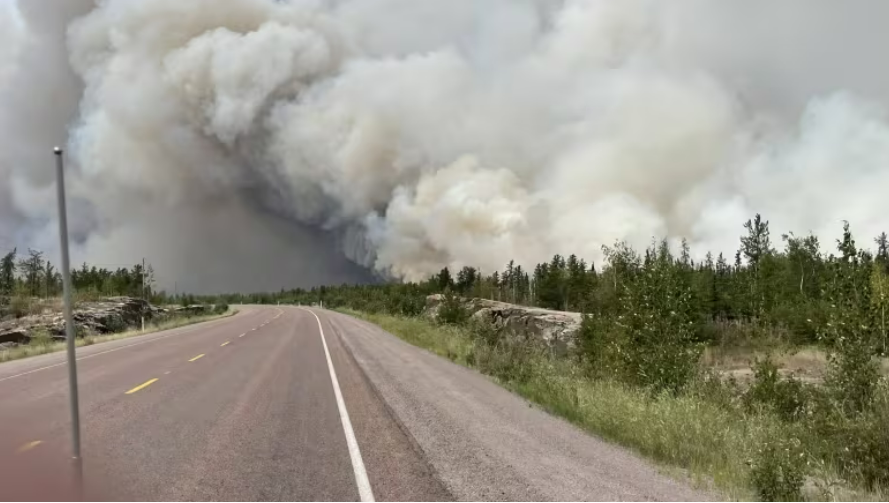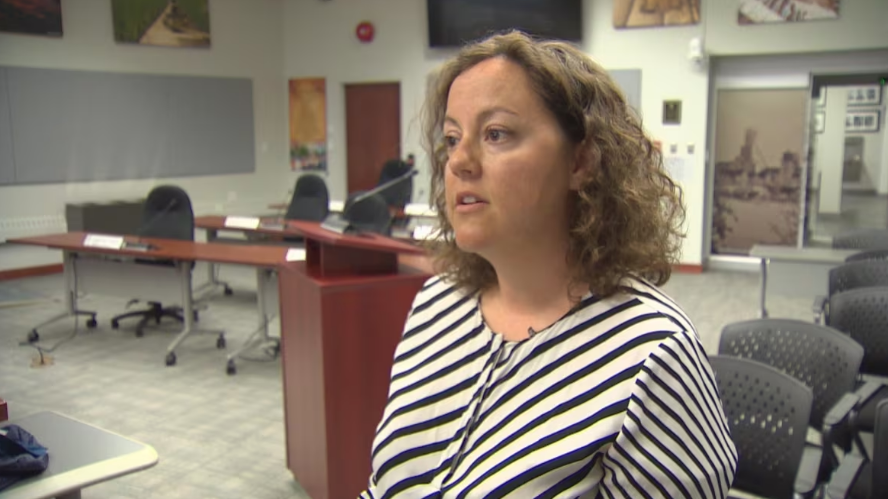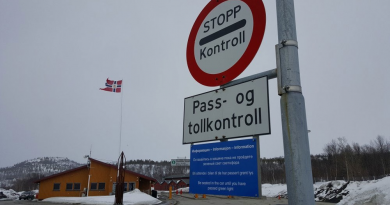Here’s what Yellowknife plans to do if a wildfire ever hits

It’s not flashy and it doesn’t get into nitty-gritty details, but Yellowknife city officials say their framework for how to respond to an emergency — such as a wildfire potentially threatening the city — gives them flexibility to adapt.
On Wednesday, the city released an overview of the framework that governs what it would do if it ever had to get everyone out in a hurry — essentially, a foundation upon which emergency evacuation plans could be built if they’re needed.
It’s a high-level document that lays out how the city would manage risk, either by moving people from one part of the city to another, or directing them to shelter in place.
What’s the risk right now?
The document comes as hundreds of Behchokǫ, N.W.T., residents take refuge at Yellowknife’s Multiplex and watch from afar as a 100,000-plus hectare (1,000-square-kilometre) wildfire bears down on their community. That fire is still 45 kilometres northwest of Yellowknife and hasn’t moved closer, but its growth to the east has been fast and furious and it has repeatedly caused Highway 3 out of Yellowknife to close.
It’s the fifth time this fire season that an N.W.T. community has had to be evacuated, and the season is only half over.
There’s no direct risk to Yellowknife yet, but Municipal and Community Affairs Minister Shane Thompson acknowledged Wednesday the speed with which the wildfire has moved.
“When we deal with fire, any community is at risk. Like, I’d be silly to say [otherwise],” Thompson said.
“Right now, the winds and the conditions are good and Yellowknife’s not at risk. But the winds could switch and it could be at risk at any point in time.”

On Thursday morning, Yellowknife Mayor Rebecca Alty said sussing out how much of a threat there is is an important part of making an evacuation plan, should it ever be needed.
City officials can’t release that plan in advance because so much of it would depend on where the risk is coming from, how big it is and what kind of threat it is — wildfire, power outage, et cetera.
“There’s so many different scenarios, there’s so many different variables that would go into it,” she said. “So it’s about having an evacuation framework and working through that.”
So what’s certain?
Some steps remain the same no matter what happens, but much of the plan depends on what kind of emergency there is.
Flooding, building fires and hazardous material spills could force a tactical evacuation — different from the kind of larger-scale evacuation that would happen in the event of a wildfire.
Wildfires or winter power outages could trigger a strategic evacuation, which would require the city to declare a state of emergency. They’d look at getting vulnerable people — prisoners, people who are homeless, people with medical challenges and others — to safety sooner.
For a wildfire specifically, Yellowknife’s emergency operations centre would kick in, meeting daily to examine risks. They would come up with a response plan to cut fire breaks and set up sprinklers and would start letting people know there could be a need to evacuate.
For a wildfire, Alty said the plan would probably involve targeted evacuations, moving people from threatened areas of Yellowknife to safer areas as emergency crews tackle the threat.

“Today, we’re not at risk, and therefore there’s not, you know, planes waiting on the runway to take us all out,” Alty said. “But that’s where, if there was a threat, the city, the territorial government [and] the federal government are working together on that evacuation.”
The plan says the city could need to shelter residents in safe areas such as buildings that “can accommodate a large number of residents for at least a couple of days.” Those buildings should have metal siding and roofing, backup power and communications, sprinklers on the roof and survival supplies inside, such as the Multiplex or Fieldhouse.
On the territory’s side, Jay Boast, a spokesperson for the Department of Municipal and Community Affairs, said Wednesday the territory has many resources it can call upon if a lengthy emergency happens.
He said the beauty of the current plan is how flexible it is.
“I know there can be some frustration in not having what would seem like a specific answer, but we would assess the various factors that are at play and what the barriers are to providing whatever service it is,” he said.
“So if we’re talking about supplies not getting through because of the roadway being closed for a long time, then the emergency management organization would take that on as a logistics issue and would start reaching out to our various resources — and there are several different ways to problem-solve.”
Related stories from around the North:
Canada: Fire services have returned to Pelly Crossing, Yukon, after a decade without, CBC News
Norway: Smoke from Canadian wildfires forecast to reach Norway, The Associated Press
Russia: New NOAA report finds vast Siberian wildfires linked to Arctic warming, The Associated Press
Sweden: Fire bans in force across large parts of Sweden, Radio Sweden
United States: Wildfires in Anchorage? Climate change sparks disaster fears, The Associated Press



